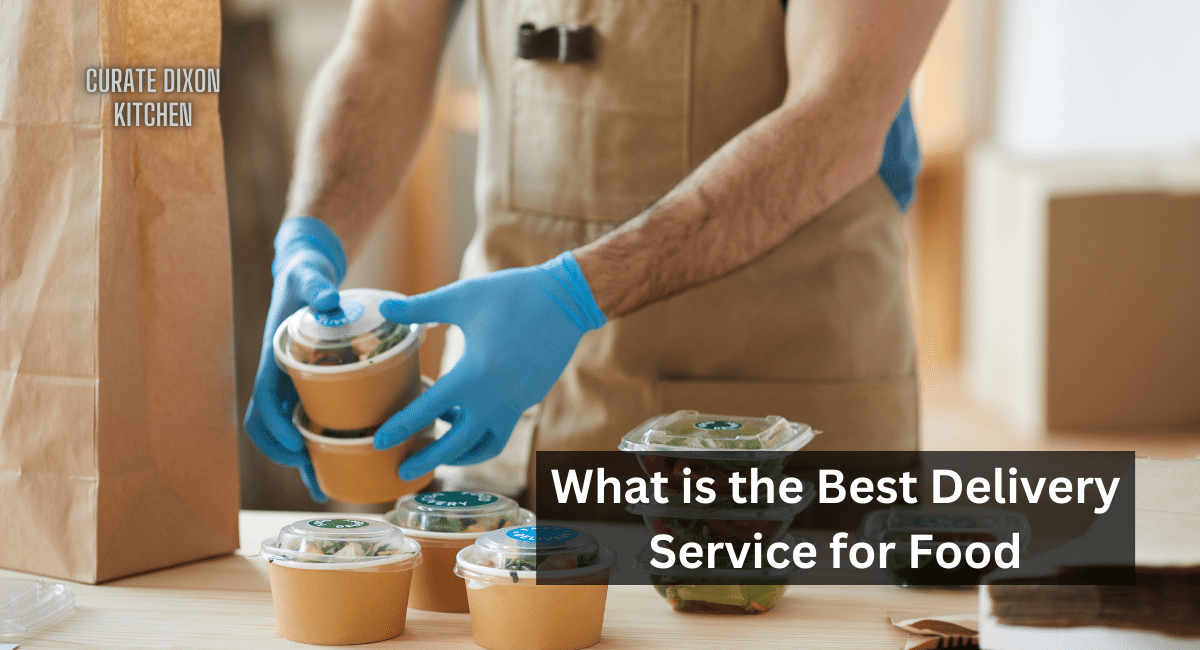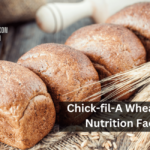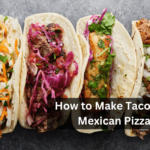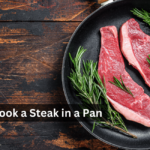In recent years, the food delivery industry has experienced a significant transformation, driven by technological advancements, consumer preferences changes, and the global pandemic. This evolution has given rise to many food delivery services, each vying for a lucrative market share. With so many options available, it can be challenging to determine which one is the best for your specific needs. In this comprehensive analysis, we will explore the leading food delivery services, dissecting their key features, pros and cons, pricing models, and overall user experience to help you make an informed decision.
The Evolution of Food Delivery
Food delivery is not a new concept; it has been around for centuries, with origins dating back to ancient Rome and China. The way we order and receive food has changed greatly due to technological advancements. Mobile apps and websites have mainly replaced traditional phone orders and paper menus, making the process more convenient and efficient.
The evolution of food delivery can be summarized in several key phases:
1. Phone Orders:
In the pre-digital era, ordering food for delivery typically involved calling a restaurant directly and placing an order over the phone. This method had its limitations in terms of convenience and accuracy.
2. Online Ordering:
The advent of the internet brought about online ordering platforms, allowing customers to place orders through restaurant websites or third-party aggregators. This marked a significant improvement in the ordering process.
3. Third-Party Aggregators:
Companies like Grubhub, Uber Eats, and DoorDash emerged as intermediaries connecting customers to various restaurants. Users can browse menus, place orders, and track deliveries from multiple restaurants on a centralized platform.
4. Delivery Apps:
The rise of smartphones led to the development of dedicated food delivery apps, providing a seamless user experience with features like real-time tracking, integrated payment options, and user reviews.
5. Cloud Kitchens:
The concept of ghost kitchens or cloud kitchens emerged, allowing restaurants to operate solely for delivery without physical dining spaces. This trend further expanded the options available for delivery.
6. Delivery Robots and Drones:
Some companies started experimenting with autonomous delivery methods, using robots and drones to bring food directly to customers’ doors.
7. Subscription Services:
To retain and incentivize customers, many food delivery services introduced subscription programs offering benefits like free delivery and discounts.
Today, the food delivery industry continues to evolve, with various services catering to multiple tastes and preferences. Let’s explore the details of the leading food delivery services and their offerings.
1. Grubhub
Grubhub is one of the pioneers in the online food delivery industry, founded in 2004. It has a vast network of restaurants across the United States, making it a popular choice for users seeking diverse culinary options.
Key Features:
1. Extensive Restaurant Selection:
Grubhub boasts a wide selection of restaurants, including local eateries and national chains, offering cuisines ranging from pizza and burgers to sushi and Indian food.
2.. User-Friendly App:
The Grubhub app is user-friendly, allowing customers to easily browse menus, customize orders, and track deliveries in real time.
3. Grubhub+ Membership:
Grubhub offers a subscription service called Grubhub+ that provides unlimited free delivery and 10% cashback on orders.
4. Restaurant Rewards:
Grubhub offers its loyalty program, allowing users to earn rewards and discounts for frequent orders.
Pros:
- Vast restaurant options.
- User-friendly app.
- Grubhub+ membership for added benefits.
- Restaurant rewards program.
Cons:
- Delivery fees can vary.
- Service fees may apply.
- Prices can be higher than in-restaurant dining.
2. Uber Eats
Uber Eats, launched in 2014, quickly gained traction due to its integration with the Uber app and extensive delivery network.
Key Features:
1. Integration with Uber App:
Uber Eats is seamlessly integrated into the Uber app, allowing users to order food and rides from a single platform.
2. Wide Delivery Range:
Uber Eats operates in numerous cities worldwide, providing access to a broad range of restaurants and cuisines.
3. Real-Time Tracking:
Users can track their food orders in real-time, similar to how they track Uber rides.
4. Uber Pass:
Uber offers a subscription service called Uber Pass, which includes benefits like free delivery and discounts on rides.
Pros:
- Convenient integration with the Uber app.
- Wide delivery network.
- Real-time order tracking.
- Uber Pass subscription for added savings.
Cons:
- Delivery fees can vary.
- Service fees may apply.
- Prices can be higher during peak times.
3. DoorDash
DoorDash is another major player in the food delivery industry, founded in 2013. It has established a strong presence in the United States and Canada, offering many restaurants.
Key Features:
1. Diverse Restaurant Choices:
DoorDash provides access to various restaurants, from local gems to popular chains.
2. DashPass Subscription:
DoorDash’s subscription service, DashPass, provides free delivery for orders over $12 and reduced service fees.
3. Group Ordering:
DoorDash allows users to place group orders, making it convenient for family or group meals.
Pros:
- Wide restaurant selection.
- DashPass subscription for added value.
- Group ordering feature.
- Real-time order tracking.
Cons:
- Delivery fees can vary.
- Service fees may apply.
- Prices can be higher during peak hours.
4. Postmates (Now Part of Uber Eats)
Postmates, founded in 2011, was known for its unique “anything, anywhere” delivery service. In 2020, Uber acquired Postmates and integrated its services into Uber Eats, expanding its reach even further.
Key Features:
1. Versatile Delivery:
Postmates, known for its versatility, offers delivery from restaurants, grocery stores, and convenience stores.
2. Uber Eats Integration:
Postmates’ services are now part of Uber Eats, providing a broader range of delivery options.
3. Real-Time Tracking:
Like Uber Eats, Postmates enables users to track their orders in real-time.
Pros:
- Versatile delivery options.
- Integration with Uber Eats for added convenience.
- Real-time order tracking.
Cons:
- Delivery fees can vary.
- Service fees may apply.
- Prices can be higher during peak times.
5. Seamless (Grubhub Owned)
Seamless, owned by Grubhub, has been a prominent player in the food delivery industry since its founding in 1999. It primarily focuses on connecting users with local restaurants for quick and convenient deliveries.
Key Features:
1. Local Restaurant Emphasis:
Seamless primarily partners with local restaurants, making it a go-to choice for those who want to support nearby eateries.
2. User-Friendly Platform:
The Seamless platform is designed to be user-friendly, allowing customers to easily browse menus, customize orders and track deliveries.
3. Seamless+ Membership:
Seamless offers a subscription service called Seamless+ that provides perks like free delivery and discounts.
Pros:
- Strong emphasis on local restaurants.
- User-friendly platform.
- Seamless+ membership for added benefits.
- Restaurant rewards program.
Cons:
- Delivery fees can vary.
- Service fees may apply.
- Availability may be limited in some areas.
6. Caviar (Owned by DoorDash)
Caviar, acquired by DoorDash in 2019, is known for its premium restaurant selection and upscale dining options. It caters to customers seeking high-quality food delivery experiences.
Key Features:
1. Premium Restaurant Choices:
Caviar partners with upscale and gourmet restaurants, offering a curated selection of high-quality cuisine.
2. Real-Time Tracking:
Users can track their Caviar orders in real-time, ensuring transparency in the delivery process.
3. DoorDash Integration:
Caviar’s services are integrated with DoorDash, providing access to a broader range of restaurants.
Pros:
- Premium restaurant selection.
- Real-time order tracking.
- Integration with DoorDash for more choices.
Cons:
- Prices can be higher for premium restaurants.
- Limited availability in some areas.
7. Amazon Restaurants (Discontinued)
Amazon Restaurants was Amazon’s foray into the food delivery industry, offering delivery from local restaurants to Prime members. However, Amazon discontinued this service in 2019, focusing on its other delivery services like Amazon Fresh and Whole Foods Market delivery.
Key Features (Historical):
1. Integration with Amazon Prime:
Amazon Restaurants was integrated into Amazon Prime, providing Prime members with additional benefits.
2. Wide Range of Restaurants:
It offers a wide selection of restaurant choices for delivery.
3. Competitive Pricing:
Amazon Restaurants often had competitive pricing and promotions for Prime members.
Pros (Historical):
- Integration with Amazon Prime.
- Extensive restaurant selection.
- Competitive pricing.
Cons (Historical):
- Service was discontinued in 2019.
- Limited to Amazon Prime members.
Comparative Analysis
Now that we’ve explored the key features, pros, and cons of some of the leading food delivery services, let’s conduct a comparative analysis to help you make an informed choice based on your specific needs and preferences.
1. Restaurant Selection:
- Grubhub, Uber Eats, DoorDash, and Postmates offer extensive restaurant selections, catering to various cuisines and tastes.
- Seamless focuses on partnering with local restaurants, making it an excellent choice for supporting nearby eateries.
- Caviar specializes in premium restaurant options, ideal for those seeking upscale dining experiences.
2. User-Friendly App:
- Grubhub, Uber Eats, DoorDash, Postmates, Seamless, and Caviar all provide user-friendly apps that make ordering and tracking deliveries convenient.
3. Subscription Services:
- Grubhub, Uber Eats, DoorDash, and Seamless offer subscription services (Grubhub+, Uber Pass, DashPass, and Seamless+) that provide benefits like free delivery and discounts for a monthly fee.
- These subscription services can be cost-effective for frequent users, but the specific benefits may vary.
4. Real-Time Order Tracking:
- Grubhub, Uber Eats, DoorDash, Postmates, Caviar, and Seamless offer real-time order tracking, enhancing transparency and user experience.
5. Delivery Fees and Service Charges:
- Delivery fees and service charges can vary among these platforms and may depend on factors such as distance, order total, and restaurant preferences.
- Pricing can also be influenced by promotions, surge pricing during peak hours, and availability of free delivery through subscription services.
6. Geographic Availability:
- These services may only be available in some places, with some being more common in particular areas or cities.
- Before choosing a service, it’s essential to ensure that it operates in your area and provides access to the restaurants you prefer.
7. Special Features:
- Postmates, known for its versatility, offers delivery from restaurants, grocery stores, and convenience stores.
- Uber Eats stands out for its seamless integration with the Uber app, allowing users to order rides and food from a single platform.
- DoorDash allows for group ordering, making coordinating meals with friends or family convenient.
8. Premium Dining Options:
- Caviar specializes in premium and upscale restaurant choices, making it suitable for those seeking high-quality dining experiences.
Choosing the best food delivery service depends on your individual preferences and needs. Each of the leading services we’ve explored in this analysis offers distinct features and advantages.
- Grubhub, Uber Eats, DoorDash, and Postmates provide extensive restaurant options, making them suitable for those seeking variety.
- Seamless focuses on supporting local restaurants and offers a user-friendly platform.
- Caviar caters to users looking for premium dining experiences.
- Subscription services like Grubhub+, Uber Pass, DashPass, and Seamless+ can offer cost savings for frequent users, but their specific benefits may differ.
Before making your choice, consider factors such as the availability of these services in your area, the types of restaurants you prefer, pricing, and any subscription benefits. Additionally, Searching for promotions and discounts on delivery platforms is beneficial since they can greatly reduce the overall cost of food delivery.
Ultimately, the “best” food delivery service is subjective and varies from person to person. It’s essential to prioritize your preferences and needs to find the best assistance with your culinary desires and budget constraints. As the food delivery industry evolves, staying informed about the latest offerings and promotions can help you make the most of these convenient services.










